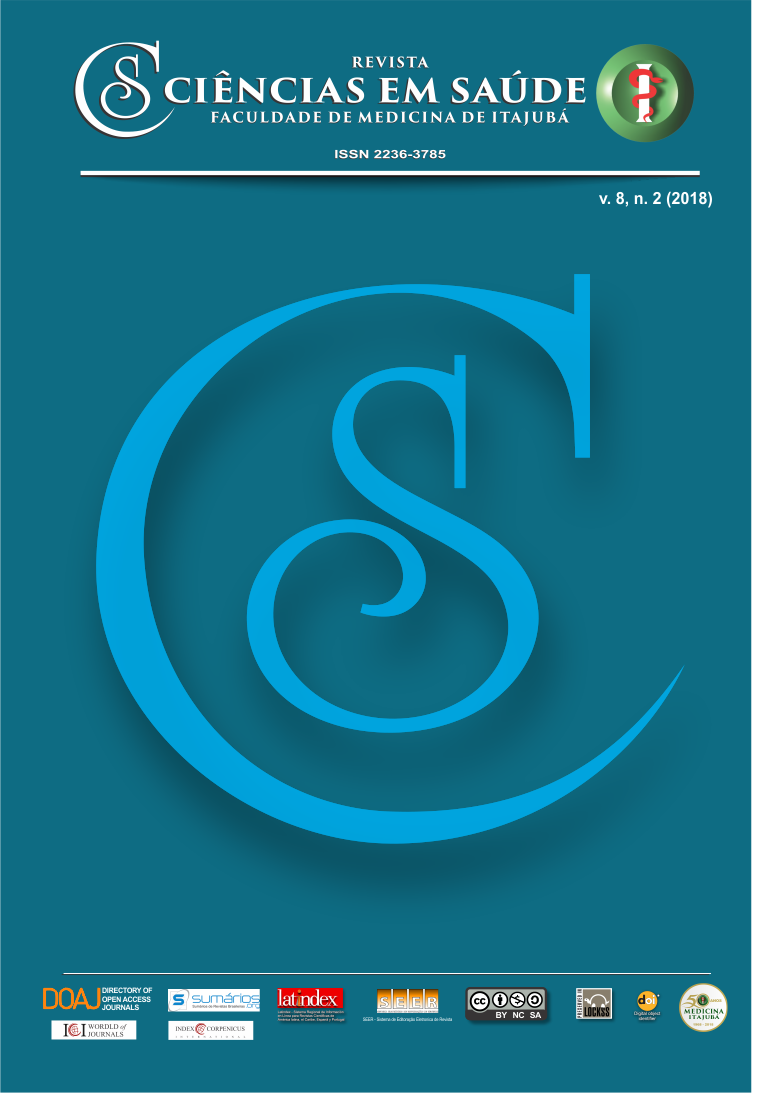Tromboembolismo pulmonar de repetição em mulher com malformação cavo-ilíaca: relato de caso / Recurrent pulmonary thromboembolism in woman with caval-iliac malformation: case report
Main Article Content
Abstract
O sistema venoso superficial e profundo é responsável pela condução do sangue dos capilares para o coração, e é constituído por veias e vênulas. Há dois circuitos que se integram: a circulação pulmonar e a circulação sistêmica. E nesta última, duas grandes veias desembocam no átrio direito: a veia cava superior e a veia cava inferior. A formação embriológica do sistema venoso retroperitoneal começa na sexta semana de gestação e é finalizada na décima semana. Portanto, as malformações nestas veias são passivelmente explicadas por alterações que ocorrem neste período. A persistência da veia cava superior esquerda representa a mais comum malformação congênita do sistema venoso na população em geral. É descrita a relação entre malformações do sistema venoso e a ocorrência de tromboembolismo venoso (TEV), como a trombose venosa profunda (TVP) e embolia pulmonar (EP). Este estudo relata o caso de uma paciente portadora de malformação de veia cava superior, que desenvolveu quadro de TEV de repetição, mesmo em vigência de anticoagulação e havendo necessidade de implante de filtro de veia cava. Como as anomalias no sistema venoso são raras e não apresentam achados clínicos exuberantes, o diagnóstico é feito tardiamente, apenas quando as complicações se manifestam.
Palavras-Chave: Tromboembolismo pulmonar; Trombose venosa profunda; Filtro de veia cava; Malformação
ABSTRACT
The venous system, which is composed of veins and venules, is responsible for conducting blood from the capillaries to the heart. There are two circuits that integrate the pulmonary circulation and the systemic circulation. In this latter, two large veins flow into the right atrium: vena cava superior and vena cava inferior. The embryological formation of the retroperitoneal venous system begins at the sixth week of gestation and is completed in the tenth week. Therefore, malformations in these veins are possibly explained by changes during this period. Persistence of the Superior Left Cava Vein represents the most common congenital malformation of the venous system in the general population. The relationship between malformations of the venous system and the occurrence of thromboembolic events such as Deep Vein Thrombosis is described. This study aims to report a case of a patient with Superior Cava Vein malformation, recurrent thromboembolic events (deep vein thrombosis and pulmonary thromboembolism), even in the presence of anticoagulation, and requiring the placement of vena cava filter. The anomalies in the venous system are rare and do not present exuberant clinical findings, the diagnosis is made late, only when the complications present themselves. Besides, therapy is based on avoiding such complications.
Keywords: Pulmonary thromboembolism; Deep venous thrombosis; Vena cava filter; Malformation
Article Details
Authors maintain copyright and grant the HSJ the right to first publication. From 2024, the publications wiil be licensed under Attribution 4.0 International 
 , allowing their sharing, recognizing the authorship and initial publication in this journal.
, allowing their sharing, recognizing the authorship and initial publication in this journal.
Authors are authorized to assume additional contracts separately for the non-exclusive distribution of the version of the work published in this journal (e.g., publishing in an institutional repository or as a book chapter), with acknowledgment of authorship and initial publication in this journal.
Authors are encouraged to publish and distribute their work online (e.g., in institutional repositories or on their personal page) at any point after the editorial process.
Also, the AUTHOR is informed and consents that the HSJ can incorporate his article into existing or future scientific databases and indexers, under the conditions defined by the latter at all times, which will involve, at least, the possibility that the holders of these databases can perform the following actions on the article.
